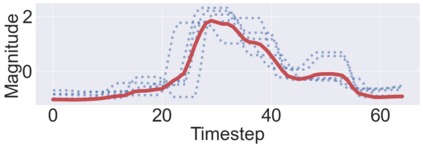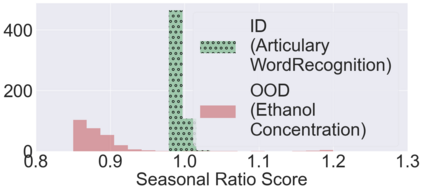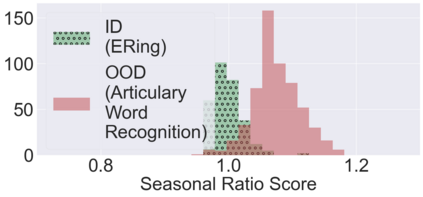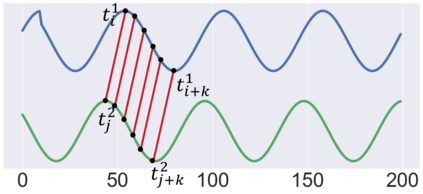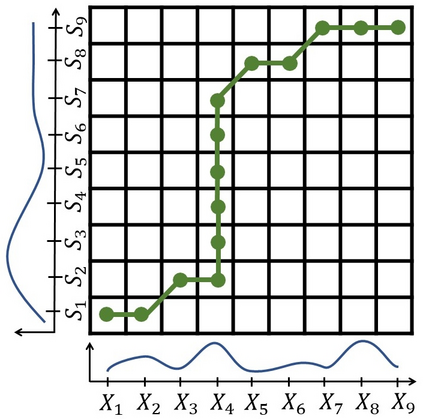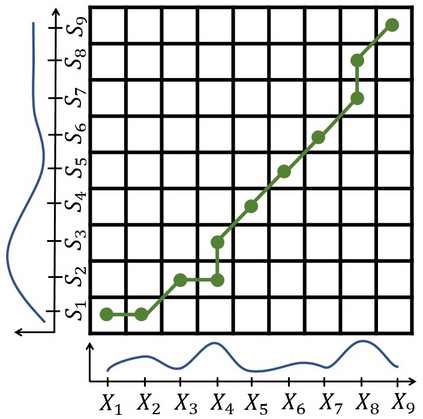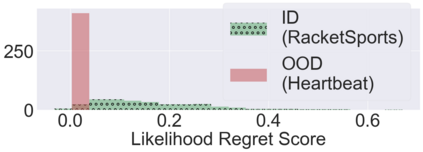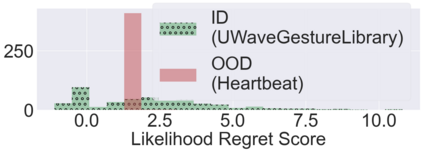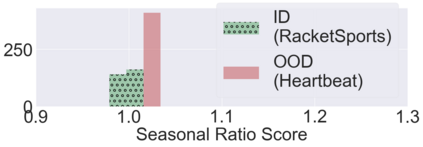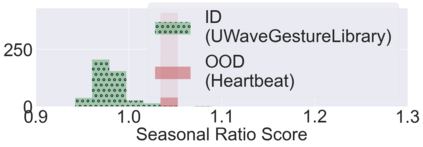Safe deployment of time-series classifiers for real-world applications relies on the ability to detect the data which is not generated from the same distribution as training data. This task is referred to as out-of-distribution (OOD) detection. We consider the novel problem of OOD detection for the time-series domain. We discuss the unique challenges posed by time-series data and explain why prior methods from the image domain will perform poorly. Motivated by these challenges, this paper proposes a novel {\em Seasonal Ratio Scoring (SRS)} approach. SRS consists of three key algorithmic steps. First, each input is decomposed into class-wise semantic component and remainder. Second, this decomposition is employed to estimate the class-wise conditional likelihoods of the input and remainder using deep generative models. The seasonal ratio score is computed from these estimates. Third, a threshold interval is identified from the in-distribution data to detect OOD examples. Experiments on diverse real-world benchmarks demonstrate that the SRS method is well-suited for time-series OOD detection when compared to baseline methods. Open-source code for SRS method is provided at https://github.com/tahabelkhouja/SRS
翻译:为现实世界应用安全部署时间序列分类器对于真实世界应用的安全部署取决于检测数据的能力,这些数据并非与培训数据相同的分布所产生的数据。 这项任务被称为分流检测( OOOD) 。 我们考虑了时间序列域 OOD探测的新问题。 我们讨论了时间序列数据构成的独特挑战,并解释了图像域先前方法为何效果不佳的原因。 受这些挑战的驱使,本文件提出了一个新的“ 季节性比率(SRS) ” 方法。 SRS 由三个关键的算法步骤组成。 首先, 每项输入都分解为类分解为类的语义组成部分和剩余部分。 第二, 使用这种分解用于使用深层基因模型估计分解输入和剩余部分的分级有条件可能性。 从这些估计中计算季节性比率分数。 第三, 从分配数据中找出一个门槛间隔,以探测OD实例。 不同现实世界基准的实验表明, 与基线方法相比, SRS 方法对于时间序列 OOD检测非常适合。 第二, 使用这种分解法用于SB/Sqours 方法的开放源代码。



